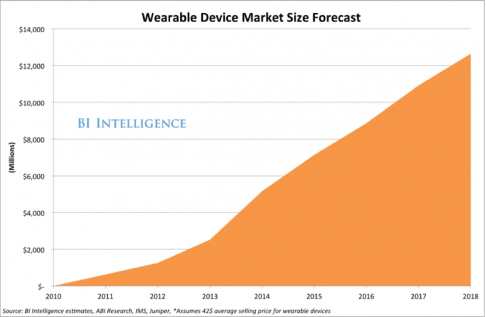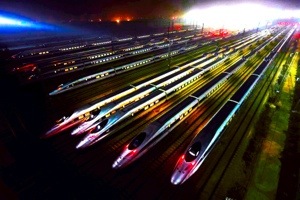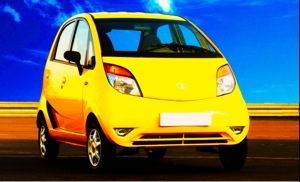With the Alibaba IPO, there has been an explosion of interest in the company.
Speculation has reached fever pitch in the media – ‘There will be a battle of dominance between Amazon and Alibaba for the global e-commerce market’; ‘With $160 Bn in valuation at IPO, Alibaba may, at some point, challenge Apple as the most valuable company in the world’; ‘Alibaba is just another Chinese copycat – when it meets ‘real’ competition as it expands globally, it will fail’.
There is a desire to understand more about Alibaba and its business model.
Is it really bigger than Amazon and eBay put together on GMV (Gross merchandise value) ?
How is it so profitable when Amazon makes so little money ?
How did Taobao become the second largest ‘retailer’ in the world so quickly, just in China ?
When will Taobao overtake Walmart globally on GMV ?
Is Taobao like eBay or Amazon, is Alipay anything like Paypal, What is Taobao and Tmall ?
Is Alibaba a China focused operation, or does it have its sights wider ?
Why is Alibaba making investments/ acquisitions/partnerships in the video space (Youku/Tudou) and in social (Sina Weibo) ?
Whats behind the spate of global acquisitions ?
Why has Jack Ma stepped down as CEO ?
Why is he investing in logistics chains and brick and mortar businesses in China ?
In this post, I am not going to address any of these questions. Enough has been written about these issues and I attach some links at the bottom of this post for those who are interested to read more.
I will focus instead on the core philosophy behind Alibaba and what has most fascinated me about Alibaba – its power and mission to harness the Chinese dream, and thereby change the world.
One of my core learnings in 6+years working in China is that, if you want to have sustainable success, it is critical to build true partnerships and structure your business for success. This means that you create a way for your partners to make money, but you tie in a mechanism so that as they make money, you make money as well. Once you have done this, to scale your business, all you need to do is find more partners, and focus all your efforts into helping them make money, secure in the knowledge that you end up driving your own business as well !
This is the core of Alibaba’s philosophy and the key driver of its success.

Jack Ma built “a company that can serve millions of small businesses”. Alibaba’s mission is “to make it easy to do business anywhere“. Jack Ma says “At Alibaba, we fight for the little guy – our role is simple – through our ecosystem we help merchants and businesses find each other to conduct business – on their terms. We help merchants to grow, create jobs and open new markets in ways that were never before possible“.
Alibaba/Taobao has lived this philosophy for 15 years. To illustrate how successful they have been, consider that there are now more stores on Taobao (6 Million) than in the real world in all China (4 Million)!!
When comparing Alibaba with Amazon or any other western commerce business the core difference is the philosophy.
Alibaba ‘serves’ ‘small businesses and entrepreneurs’, it does not ‘sell to consumers’.
Alibaba ‘provides an ecosystem’, it does not see itself as a retailer.
Alibaba ‘fights for the little guy’, it is not a mechanism for big companies to sell to small consumers.
Alibaba is not about the short term. Jack Ma said “We want to be a company that last 102 years. We have 87 years to go“. With this scale of vision and the mindset to emancipate millions, Alibaba has the potential to change the world, not just more than any retailer, but perhaps more than any other company.
This difference in philosophy explains why Alibaba’s revenue model is so unique and why their business model is more virtuous. It explains their focus on enabling payment solutions and faster logistics. At heart Alibaba is a company that serves and hence, their focus is on things that can improve their service KPIs.
It explains why they have every chance of becoming the dominant retail platform in the world of tomorrow – their competitors can compete with other companies, but how can anyone compete with the focused, harnessed, entrepreneurial drive of an entire nation of 1.3 billion people ?
While Amazon and other companies have now got a significant proportion of their business going through a ‘marketplace’, unlike Alibaba, their aim is to benefit the end consumer through lower prices, and if their suppliers get squeezed, so be it.
For those who doubt Alibaba’s ability to win outside China, they should consider that Alibaba is likely to apply the same enabling philosophy wherever they go. Jack Ma says “We have become a household name in China and soon we will be ready for the world to know us.”
In India – a country with 4 Million retailers, Alibaba’s system be an inclusive way to connect them to the global marketplace, without the loss of jobs that organised retail could create.
Alibaba has the potential to create an Indian dream, an African dream, A European dream – where ordinary people could be given a platform to become entrepreneurs, and drag Alibaba along with them on the road to riches. The desire to be rich and successful is universal, and Alibaba’s philosophy can find traction everywhere.
In 1992, Deng Xiaoping encapsulated the Chinese dream when he said “to be rich is glorious“. The Chinese are a people with tremendous work ethic and a huge entrepreneurial drive. China, since it started opening up in 1979, created an environment which allowed this ‘Chinese dream’ to take root. While the 1900’s were driven by the American dream, there is every likelihood that the 2000’s will be driven by the power of the Chinese dream.
Alibaba is at the fulcrum of the Chinese dream. What’s more, Alibaba could be poised to ignite the Indian dream, the ASEAN dream and the African dream as well. In so doing, Alibaba could become a force for good – for positive change and the economic democratisation of the world order.
Jack Ma said “today is difficult, tomorrow is even more difficult, but the day after tomorrow is beautiful“. His dream for the day after tomorrow could just end up changing the world as we know it.
Jack Ma explains his philosophy in this video which was uploaded to youku.com
For more on Alibaba, click the links below :
https://www.linkedin.com/pulse/article/20140908065624-13518874-who-s-on-warpath-to-overtake-apple-as-the-world-s-most-valuable-company?trk=prof-post
https://www.linkedin.com/pulse/article/20140610130310-8549453-alibaba-rise-crocodile-in-the-yangtze?trkInfo=VSRPsearchId%3A91382241410365998607%2CVSRPtargetId%3A5882109807384629248%2CVSRPcmpt%3Aprimary&trk=vsrp_influencer_content_res_name
https://www.linkedin.com/pulse/article/20140509180346-8183750-alibaba-a-fruity-perspective?trkInfo=VSRPsearchId%3A91382241410365955747%2CVSRPtargetId%3A5870593710290399232%2CVSRPcmpt%3Aprimary&trk=vsrp_influencer_content_res_name
https://www.linkedin.com/pulse/article/20140909000839-115522836-the-alluring-tale-of-alibaba?trkInfo=VSRPsearchId%3A91382241410365955747%2CVSRPtargetId%3A5914880539386458112%2CVSRPcmpt%3Aprimary&trk=vsrp_influencer_content_res_name
https://www.linkedin.com/pulse/article/20140808235938-174887856-alibaba-is-here-to-change-logistics?trkInfo=VSRPsearchId%3A91382241410365998607%2CVSRPtargetId%3A5903660507373518848%2CVSRPcmpt%3Aprimary&trk=vsrp_influencer_content_res_name
https://www.linkedin.com/pulse/article/20140611105836-107304053-lessons-learnt-from-alibaba-and-jack-ma?trkInfo=VSRPsearchId%3A91382241410366018255%2CVSRPtargetId%3A5882438004588429312%2CVSRPcmpt%3Aprimary&trk=vsrp_influencer_content_res_name










